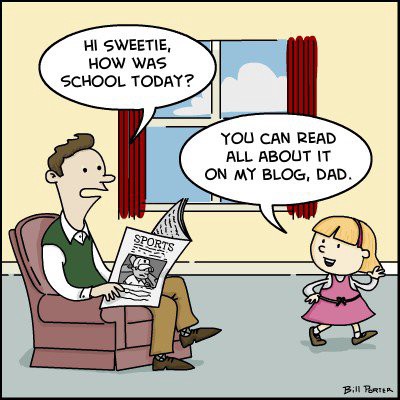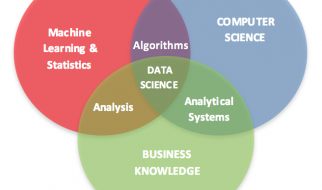 Digital natives are the generation of young people who are ?native speakers?. (source: www.unsplash.com)
Digital natives are the generation of young people who are ?native speakers?. (source: www.unsplash.com)
Technology made a big change for the new generations. It became a very popular topic for psychologists and sociologists. That resulted in the use of labels such as ?digital native?, ?the net generation?, ?Google generation? or ?the millennials?. These highlights are defining the lives of young people at the age of new technologies.
?Digital natives? are generally born after the 1980s and they are comfortable in the digital age, because they grew up using technology, but ?digital immigrants? are those who are born before 1980s and they are fearful about using technology. ?Digital immigrants? are the older crew, they weren?t raised in a digital environment. The term digital immigrant mostly applies to individuals who were born before the spread of the digital technology and who were not exposed to it at an early age. Digital natives are the opposite of digital immigrants, they have been interacting with technology from childhood. According to Prensky, digital natives are the generation of young people who are ?native speakers? of the digital language of computers, video games and the Internet.
As I observe younger generation and the older generation, I see the difference clearly. I frequently find myself interfacing between the newest digital natives and classic digital immigrants.
Millennials were born between the 1980s and 2000s. Those who were born after 2000 are considered Generation Z. In the recent years researchers observed two generations: those born after the 1980s, and those born after 1993, and the results were that the younger group had more positive attitudes toward the Internet and lower anxiety scores about the Internet and higher web, e-mail and social media usage. Studies say that digital natives? brains are more actively engaged while scrolling through a webpage than while reading printed text.
New technologies have been a defining feature in the lives of younger generations in a way that they predict a fundamental change in the way young people communicate, socialize, create and learn. The Internet has reshaped the way we search for information and the way we think.
Digital natives see everyone on the equal level and are not dividing the world into hierarchies, they view the world horizontally. They cross boundaries and embrace the benefits of sharing with each other. Those values exist because of what they are driven by. We can learn a lot about digital native generations because their world is a genuine democracy and equality. They reject centralized and control-based forms of governance. More aggressive, competitive and result-obsessed generation, the advantage is their productivity. The difference between digital natives and digital immigrants is that digital immigrants are goal oriented and digital natives are value oriented. Digital natives like to parallel process and multi-task.
Because of interacting with technology, digital natives ?think and process information fundamentally differently? (Prensky) to digital immigrants. Digital natives, according to Prensky, process information quickly, enjoy multi-tasking and gaming, while digital immigrants process information slowly, working on one thing at a time and do not appreciate less serious approaches to learning. This divide, Prensky argued, is the greatest problem facing education today and teachers must change the way they teach in order to engage their students. Children raised with the computer think differently. They develop hypertext minds. There is a need for education to change in order to create better generation expectations. Prensky claims the digital native is becoming the dominant global demographic, and the digital immigrant is in decline.
The thing is that digital natives first check their social platforms, not TV. They would rather be engaged than marked to something, they do not care if the content is professionally produced, but that it is authentic and on their level. They develop their culture ? IT culture.
 Digital immigrant vs. digital native(source: www.craigaharrington.wordpress.com)
Digital immigrant vs. digital native(source: www.craigaharrington.wordpress.com)
Digital immigrants? groups:
Avoiders: they prefer a relatively minimal technology, or technology-free lifestyle. They do not have an email account and/or smartphones and tend to have deadlines. Social media is too much for them and they do not see the value in these activities.
Reluctant adopters: they accept technology and are trying to engage with it, but feel unintuitive and hard to use it. They have a cell phone but do not use texting, occasionally they use Google but do not have a Facebook account but they check their emails and use online banking.
Enthusiastic adopters: they are digital immigrants who have the potential to keep up with natives. They embrace technology and they may be high-tech executives, programmers and business people. This group sees the value of technology, they use Facebook and check emails regularly and technology makes them excited. If they are doing business, they have a website.
Digital natives grouping:
Avoiders: even though they were born in the digital world, some young people do not feel an affinity for digital technologies and Facebook. Mobile technologies do not enamor them. They have cell phones, but do not use email and social media accounts.
Minimalists: they use technology minimally and when they perceive it necessary. They search information on Google if they have to and purchase online if they cannot buy something at a local store. They check their Facebook account once a day or every couple of days.
Enthusiastic participants are the most of the digital natives. They enjoy technology and gadgets. They use Facebook all day long and have other social media accounts, watching YouTube and movies online as much as possible. The first thing they do when they want to know something is: turn to Google. This group is easier to reach via social media rather than cell phones. They thrive on instant communication and own a smartphone for constant access to the Web.
So how can people from these two groups work together? How can digital immigrants teach digital natives and vice versa?
Some digital immigrants surpass digital natives in tech-savviness, but there is a belief that an early exposure to technology fundamentally changes the way people learn. The adoption of digital technology has not been a unified phenomenon worldwide. There are a lot of opportunities where they can learn from each other, and where the generations feed each other knowledge. Collaboration is they key because digital immigrants are those who invented technologies and systems that digital natives today use fluently. It is important then, to have a variety of people with a variety of abilities and experiences. Teachers must develop lessons on horizontal solutions. Embracing all technology leads to a broader understanding of the problem. As digital natives are driven by productivity, their working style may seem competitive, so incorporating more value in the process may be a good strategy.
Learning from the natives
From the natives, the immigrants can learn to be more open and willing to engage with learners of differing backgrounds. They can learn from the natives how to sift through and focus resources, which are aplenty and are not as overwhelming for the native. They can learn to scale the learning and create what is possible.
Learning from the immigrants
Digital immigrants can teach natives to achieve goals quickly. They can help the ?techno-wizards? scale the learning and create what is possible. They can look at the existing institutions and re-purpose them or rethink their vitality. A Native may be able to offer great ideas for layouts, image, design and labeling, while the immigrant would contribute their knowledge to storytelling and the value of including worthy artifacts.


